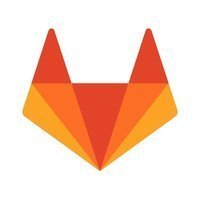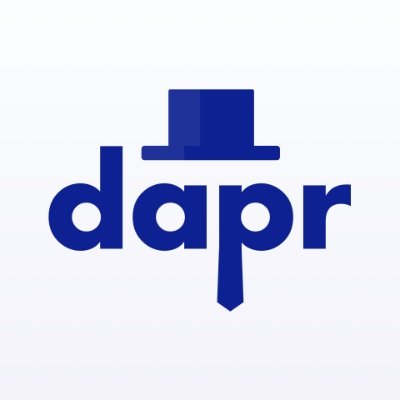What is Azure Service Fabric and what are its top alternatives?
Top Alternatives to Azure Service Fabric
 Docker
DockerThe Docker Platform is the industry-leading container platform for continuous, high-velocity innovation, enabling organizations to seamlessly build and share any application — from legacy to what comes next — and securely run them anywhere ...
 Kubernetes
KubernetesKubernetes is an open source orchestration system for Docker containers. It handles scheduling onto nodes in a compute cluster and actively manages workloads to ensure that their state matches the users declared intentions. ...
 Azure Container Service
Azure Container ServiceAzure Container Service optimizes the configuration of popular open source tools and technologies specifically for Azure. You get an open solution that offers portability for both your containers and your application configuration. You select the size, the number of hosts, and choice of orchestrator tools, and Container Service handles everything else. ...
 AWS Lambda
AWS LambdaAWS Lambda is a compute service that runs your code in response to events and automatically manages the underlying compute resources for you. You can use AWS Lambda to extend other AWS services with custom logic, or create your own back-end services that operate at AWS scale, performance, and security. ...
 Azure App Service
Azure App ServiceQuickly build, deploy, and scale web apps created with popular frameworks .NET, .NET Core, Node.js, Java, PHP, Ruby, or Python, in containers or running on any operating system. Meet rigorous, enterprise-grade performance, security, and compliance requirements by using the fully managed platform for your operational and monitoring tasks. ...
 AWS Fargate
AWS FargateAWS Fargate is a technology for Amazon ECS and EKS* that allows you to run containers without having to manage servers or clusters. With AWS Fargate, you no longer have to provision, configure, and scale clusters of virtual machines to run containers. ...
 Azure Kubernetes Service
Azure Kubernetes ServiceDeploy and manage containerized applications more easily with a fully managed Kubernetes service. It offers serverless Kubernetes, an integrated continuous integration and continuous delivery (CI/CD) experience, and enterprise-grade security and governance. Unite your development and operations teams on a single platform to rapidly build, deliver, and scale applications with confidence. ...
 Istio
IstioIstio is an open platform for providing a uniform way to integrate microservices, manage traffic flow across microservices, enforce policies and aggregate telemetry data. Istio's control plane provides an abstraction layer over the underlying cluster management platform, such as Kubernetes, Mesos, etc. ...
Azure Service Fabric alternatives & related posts
- Rapid integration and build up823
- Isolation692
- Open source521
- Testability and reproducibility505
- Lightweight460
- Standardization218
- Scalable185
- Upgrading / downgrading / application versions106
- Security88
- Private paas environments85
- Portability34
- Limit resource usage26
- Game changer17
- I love the way docker has changed virtualization16
- Fast14
- Concurrency12
- Docker's Compose tools8
- Easy setup6
- Fast and Portable6
- Because its fun5
- Makes shipping to production very simple4
- Highly useful3
- It's dope3
- Package the environment with the application2
- Super2
- Open source and highly configurable2
- Simplicity, isolation, resource effective2
- MacOS support FAKE2
- Its cool2
- Does a nice job hogging memory2
- Docker hub for the FTW2
- HIgh Throughput2
- Very easy to setup integrate and build2
- Asdfd0
- New versions == broken features8
- Unreliable networking6
- Documentation not always in sync6
- Moves quickly4
- Not Secure3
related Docker posts
Our whole DevOps stack consists of the following tools:
- GitHub (incl. GitHub Pages/Markdown for Documentation, GettingStarted and HowTo's) for collaborative review and code management tool
- Respectively Git as revision control system
- SourceTree as Git GUI
- Visual Studio Code as IDE
- CircleCI for continuous integration (automatize development process)
- Prettier / TSLint / ESLint as code linter
- SonarQube as quality gate
- Docker as container management (incl. Docker Compose for multi-container application management)
- VirtualBox for operating system simulation tests
- Kubernetes as cluster management for docker containers
- Heroku for deploying in test environments
- nginx as web server (preferably used as facade server in production environment)
- SSLMate (using OpenSSL) for certificate management
- Amazon EC2 (incl. Amazon S3) for deploying in stage (production-like) and production environments
- PostgreSQL as preferred database system
- Redis as preferred in-memory database/store (great for caching)
The main reason we have chosen Kubernetes over Docker Swarm is related to the following artifacts:
- Key features: Easy and flexible installation, Clear dashboard, Great scaling operations, Monitoring is an integral part, Great load balancing concepts, Monitors the condition and ensures compensation in the event of failure.
- Applications: An application can be deployed using a combination of pods, deployments, and services (or micro-services).
- Functionality: Kubernetes as a complex installation and setup process, but it not as limited as Docker Swarm.
- Monitoring: It supports multiple versions of logging and monitoring when the services are deployed within the cluster (Elasticsearch/Kibana (ELK), Heapster/Grafana, Sysdig cloud integration).
- Scalability: All-in-one framework for distributed systems.
- Other Benefits: Kubernetes is backed by the Cloud Native Computing Foundation (CNCF), huge community among container orchestration tools, it is an open source and modular tool that works with any OS.
I have got a small radio service running on Node.js. Front end is written with React and packed with Webpack . I use Docker for my #DeploymentWorkflow along with Docker Swarm and GitLab CI on a single Google Compute Engine instance, which is also a runner itself. Pretty unscalable decision but it works great for tiny projects. The project is available on https://fridgefm.com
Kubernetes
- Leading docker container management solution166
- Simple and powerful130
- Open source108
- Backed by google76
- The right abstractions58
- Scale services26
- Replication controller20
- Permission managment11
- Supports autoscaling9
- Cheap8
- Simple8
- Self-healing7
- Open, powerful, stable5
- Promotes modern/good infrascture practice5
- Reliable5
- No cloud platform lock-in5
- Scalable4
- Quick cloud setup4
- Cloud Agnostic3
- Custom and extensibility3
- A self healing environment with rich metadata3
- Captain of Container Ship3
- Backed by Red Hat3
- Runs on azure3
- Expandable2
- Sfg2
- Everything of CaaS2
- Gke2
- Golang2
- Easy setup2
- Steep learning curve16
- Poor workflow for development15
- Orchestrates only infrastructure8
- High resource requirements for on-prem clusters4
- Too heavy for simple systems2
- Additional vendor lock-in (Docker)1
- More moving parts to secure1
- Additional Technology Overhead1
related Kubernetes posts
How Uber developed the open source, end-to-end distributed tracing Jaeger , now a CNCF project:
Distributed tracing is quickly becoming a must-have component in the tools that organizations use to monitor their complex, microservice-based architectures. At Uber, our open source distributed tracing system Jaeger saw large-scale internal adoption throughout 2016, integrated into hundreds of microservices and now recording thousands of traces every second.
Here is the story of how we got here, from investigating off-the-shelf solutions like Zipkin, to why we switched from pull to push architecture, and how distributed tracing will continue to evolve:
https://eng.uber.com/distributed-tracing/
(GitHub Pages : https://www.jaegertracing.io/, GitHub: https://github.com/jaegertracing/jaeger)
Bindings/Operator: Python Java Node.js Go C++ Kubernetes JavaScript OpenShift C# Apache Spark
Our first experience with .NET core was when we developed our OSS feature management platform - Tweek (https://github.com/soluto/tweek). We wanted to create a solution that is able to run anywhere (super important for OSS), has excellent performance characteristics and can fit in a multi-container architecture. We decided to implement our rule engine processor in F# , our main service was implemented in C# and other components were built using JavaScript / TypeScript and Go.
Visual Studio Code worked really well for us as well, it worked well with all our polyglot services and the .Net core integration had great cross-platform developer experience (to be fair, F# was a bit trickier) - actually, each of our team members used a different OS (Ubuntu, macos, windows). Our production deployment ran for a time on Docker Swarm until we've decided to adopt Kubernetes with almost seamless migration process.
After our positive experience of running .Net core workloads in containers and developing Tweek's .Net services on non-windows machines, C# had gained back some of its popularity (originally lost to Node.js), and other teams have been using it for developing microservices, k8s sidecars (like https://github.com/Soluto/airbag), cli tools, serverless functions and other projects...
- Easy to setup, very agnostic6
- It supports Kubernetes, Mesos DC/OS and Docker Swarm3
- It has a nice command line interface (CLI) tool2
related Azure Container Service posts
AWS Lambda
- No infrastructure129
- Cheap83
- Quick70
- Stateless59
- No deploy, no server, great sleep47
- AWS Lambda went down taking many sites with it12
- Event Driven Governance6
- Extensive API6
- Auto scale and cost effective6
- Easy to deploy6
- VPC Support5
- Integrated with various AWS services3
- Cant execute ruby or go7
- Compute time limited3
- Can't execute PHP w/o significant effort1
related AWS Lambda posts
Recently we were looking at a few robust and cost-effective ways of replicating the data that resides in our production MongoDB to a PostgreSQL database for data warehousing and business intelligence.
We set ourselves the following criteria for the optimal tool that would do this job: - The data replication must be near real-time, yet it should NOT impact the production database - The data replication must be horizontally scalable (based on the load), asynchronous & crash-resilient
Based on the above criteria, we selected the following tools to perform the end to end data replication:
We chose MongoDB Stitch for picking up the changes in the source database. It is the serverless platform from MongoDB. One of the services offered by MongoDB Stitch is Stitch Triggers. Using stitch triggers, you can execute a serverless function (in Node.js) in real time in response to changes in the database. When there are a lot of database changes, Stitch automatically "feeds forward" these changes through an asynchronous queue.
We chose Amazon SQS as the pipe / message backbone for communicating the changes from MongoDB to our own replication service. Interestingly enough, MongoDB stitch offers integration with AWS services.
In the Node.js function, we wrote minimal functionality to communicate the database changes (insert / update / delete / replace) to Amazon SQS.
Next we wrote a minimal micro-service in Python to listen to the message events on SQS, pickup the data payload & mirror the DB changes on to the target Data warehouse. We implemented source data to target data translation by modelling target table structures through SQLAlchemy . We deployed this micro-service as AWS Lambda with Zappa. With Zappa, deploying your services as event-driven & horizontally scalable Lambda service is dumb-easy.
In the end, we got to implement a highly scalable near realtime Change Data Replication service that "works" and deployed to production in a matter of few days!
Heroku Docker GitHub Node.js hapi Vue.js AWS Lambda Amazon S3 PostgreSQL Knex.js Checkly is a fairly young company and we're still working hard to find the correct mix of product features, price and audience.
We are focussed on tech B2B, but I always wanted to serve solo developers too. So I decided to make a $7 plan.
Why $7? Simply put, it seems to be a sweet spot for tech companies: Heroku, Docker, Github, Appoptics (Librato) all offer $7 plans. They must have done a ton of research into this, so why not piggy back that and try it out.
Enough biz talk, onto tech. The challenges were:
- Slice of a portion of the functionality so a $7 plan is still profitable. We call this the "plan limits"
- Update API and back end services to handle and enforce plan limits.
- Update the UI to kindly state plan limits are in effect on some part of the UI.
- Update the pricing page to reflect all changes.
- Keep the actual processing backend, storage and API's as untouched as possible.
In essence, we went from strictly volume based pricing to value based pricing. Here come the technical steps & decisions we made to get there.
- We updated our PostgreSQL schema so plans now have an array of "features". These are string constants that represent feature toggles.
- The Vue.js frontend reads these from the vuex store on login.
- Based on these values, the UI has simple
v-ifstatements to either just show the feature or show a friendly "please upgrade" button. - The hapi API has a hook on each relevant API endpoint that checks whether a user's plan has the feature enabled, or not.
Side note: We offer 10 SMS messages per month on the developer plan. However, we were not actually counting how many people were sending. We had to update our alerting daemon (that runs on Heroku and triggers SMS messages via AWS SNS) to actually bump a counter.
What we build is basically feature-toggling based on plan features. It is very extensible for future additions. Our scheduling and storage backend that actually runs users' monitoring requests (AWS Lambda) and stores the results (S3 and Postgres) has no knowledge of all of this and remained unchanged.
Hope this helps anyone building out their SaaS and is in a similar situation.
- .Net Framework6
- Visual studio5
related Azure App Service posts
Easier setup and integration for PHP based applications. Azure App Service requires a lot of extra configuration, while AWS Elastic Beanstalk has most things set-up out of the box. On top of this, Azure is much more expensive.
- Expensive2
related AWS Fargate posts
 Node.js
Node.js Slack
Slack Amazon EC2 Container Service
Amazon EC2 Container Service AWS Fargate
AWS Fargate AWS Elastic Load Balancing (ELB)
AWS Elastic Load Balancing (ELB)We build a Slack app using the Bolt framework from slack https://api.slack.com/tools/bolt, a Node.js express app. It allows us to easily implement some administration features so we can easily communicate with our backend services, and we don't have to develop any frontend app since Slack block kit will do this for us. It can act as a Chatbot or handle message actions and custom slack flows for our employees.
This app is deployed as a microservice on Amazon EC2 Container Service with AWS Fargate. It uses very little memory (and money) and can communicate easily with our backend services. Slack is connected to this app through a ALB ( AWS Elastic Load Balancing (ELB) )
Heroku is unable to handle payment issues arising due to Indian Reserve Bank's decision to stop recurring card payments. I am using the following Heroku services:
- Web Dyno
- Worker Dyno (Scheduler)
- Cron To Go (Queue)
- ClearDB (MySQL)
- Heroku Redis (Queue Driver)
I have to migrate my Apache/ PHP/ Laravel/ HTML/ CSS/ jQuery/ MySQL application hosted on Heroku to a new provider. My current options visible are:
- AWS Fargate
- AWS Beanstalk
- Quovery
- Microsoft Azure
- Laravel Vapor
- Laravel Forge
Does anyone have any guidance on which of the above options (or any other option not identified above) is recommended for migrating away from Heroku? and why?
related Azure Kubernetes Service posts
Visual Studio Azure DevOps Azure Functions Azure Websites #Azure #AzureKeyVault #AzureAD #AzureApps
#Azure Cloud Since Amazon is potentially our competitor then we need a different cloud vendor, also our programmers are microsoft oriented so the choose were obviously #Azure for us.
Azure DevOps Because we need to be able to develop a neww pipeline into Azure environment ina few minutes.
Azure Kubernetes Service We already in #Azure , also need to use K8s , so let's use AKS as it's a manged Kubernetes in the #Azure
- Zero code for logging and monitoring14
- Service Mesh9
- Great flexibility8
- Resiliency5
- Powerful authorization mechanisms5
- Ingress controller5
- Easy integration with Kubernetes and Docker4
- Full Security4
- Performance17
related Istio posts
At my company, we are trying to move away from a monolith into microservices led architecture. We are now stuck with a problem to establish a communication mechanism between microservices. Since, we are planning to use service meshes and something like Dapr/Istio, we are not sure on how to split services between the two. Service meshes offer Traffic Routing or Splitting whereas, Dapr can offer state management and service-service invocation. At the same time both of them provide mLTS, Metrics, Resiliency and tracing. How to choose who should offer what?
As for the new support of service mesh pattern by Kong, I wonder how does it compare to Istio?





































